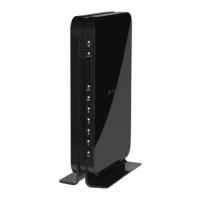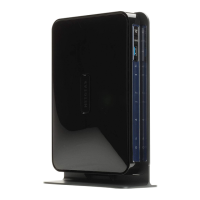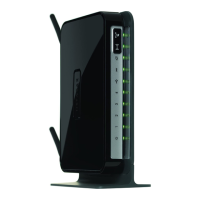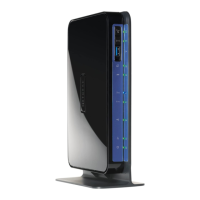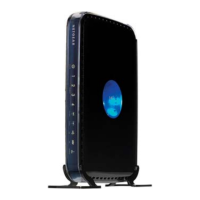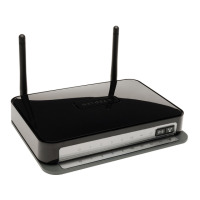Advanced Settings
77
N150 Wireless ADSL2+ Modem Router DGN1000
IP Address. The LAN IP address of the wireless modem router.
IP Subnet Mask. Th
e LAN subnet mask of the wireless modem router. Combined with
the IP address, the IP subnet mask allows a device to know which other addresses are
local to it, and which have to be reached through a gateway or wireless modem router.
RIP Direction. RIP
allows a wireless modem router to exchange routing information with
other routers. The RIP Direction selection controls how the wireless modem router sends
and receives RIP packets. The default setting is Both.
• When set to
Both or Out Only, the wireless modem router broadcasts its routing table
periodically.
• When
set to Both or In Only, the wireless modem router incorporates the RIP
information that it receives.
• When
set to None, the wireless modem router does not send any RIP packets and
ignores any RIP packets received.
RIP Version. This controls the
format and the broadcasting method of the RIP packets
that the wireless modem router sends. It recognizes both formats when receiving. By
default, this is set for RIP-1.
• RIP-1. This version is universally support
ed. It is probably adequate for most
networks, unless you have an unusual network setup.
• RIP-2. Th
is version carries more information. Both RIP-2B and RIP-2M send the
routing data in RIP-2 format.
• RIP-2B. This ve
rsion uses subnet broadcasting.
• RIP-2M. T
his version uses multicasting.
Access Router Interface on Additional Port
When NAT is disabled, the wireless modem router’s management interface might be
accessed at the wireless modem router’s LAN address using the port number you enter. This
feature is not available when NAT is enabled.
Use Router as DHCP Server
By default, the wireless modem router functions as a Dynamic Host Configuration Protocol
(DHCP) server, allowing it to assign IP, DNS server, and default gateway addresses to all
computers connected to the wireless modem router’s LAN. The assigned default gateway
address is the LAN address of the router. IP addresses are assigned to the attached PCs
from a pool of addresses specified in this screen. Each pool address is tested before it is
assigned to avoid duplicate addresses on the LAN.For most applications, the default DHCP
and TCP/IP settings of the router are satisfactory.
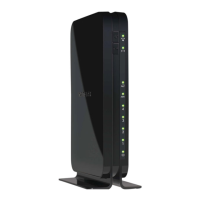
